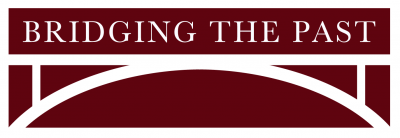It used to be that we couldn’t trust what we found on the internet. There are still certainly many cases where that is true, but there are now some very helpful blogs and websites out there that are well researched and documented. As my current interest is medicine in the early modern period (which was almost exactly the same as medicine in colonial New England), I have found some blogs that tie right in. They are written by experts in the field and are well documented.
Early Modern Medicine is written by Dr. Jennifer Evans, lecturer in history at the University of Hertfordshire. Her research interest is medicine, the body and gender in early modern Europe. Recent blog posts covered topics ranging from treatment and beliefs about the heart and heart maladies, rheumatism and humors, and using unicorn horns to treat poison. Other experts in the field often post as well. On her blogroll page, she has a nice listing of related sites. She is on Twitter at @UniofHerts
The Recipes Project: Food, Magic, Science and Medicine is written by an international group of scholars interested in recipes. Recent posts include medicine as an exact science (using specific measurements so ingredients work in harmony rather than cancelling each other out), examining social networks using maps and documents to examine how recipes are collected for a 17th century manuscript, and a 17th century cure-all recipe. The Recipes Project can also be found on Twitter and Facebook (see the About page) and they had such interesting entries that I was distracted from blog writing for a while. They also have a further reading page.
Hx: Medical Historia is written by Paul Middleton, a medical historian. Recent posts include early treatments for insomnia, the magic of the mythical unicorn horn that is included in many recipes, and sarsaparilla. He can also be found on twitter: @Paul_Middleton1
What are some of your favorite well-researched blogs to add social history context to your genealogical research?

![DSCN1137[1]](https://bridgingthepast.files.wordpress.com/2013/12/dscn11371.jpg?w=300&h=225)
![DSCN1155[1]](https://bridgingthepast.files.wordpress.com/2013/12/dscn11551.jpg?w=300&h=225)
![DSCN1153[1]](https://bridgingthepast.files.wordpress.com/2013/12/dscn11531.jpg?w=300&h=225)
![DSCN1150[1]](https://bridgingthepast.files.wordpress.com/2013/12/dscn11501.jpg?w=300&h=225)
![DSCN1148[1]](https://bridgingthepast.files.wordpress.com/2013/12/dscn11481.jpg?w=300&h=225)
![DSCN1136[1]](https://bridgingthepast.files.wordpress.com/2013/12/dscn11361.jpg?w=300&h=225)